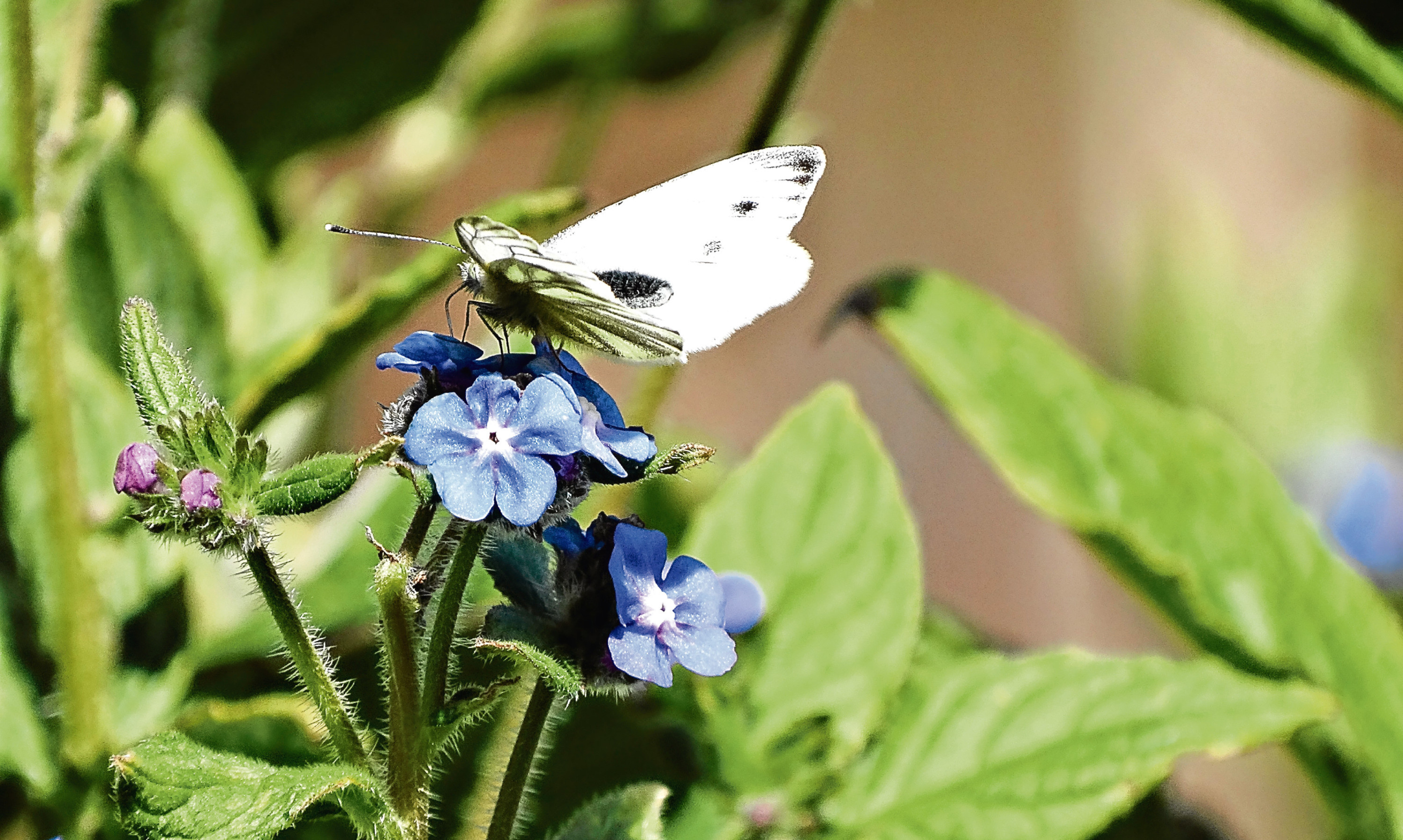May morning – the first morning of May month – when girls traditionally rise from their beds at dawn and dash outdoors to bathe their faces in the early morning dew, in expectation that it will bestow on them a flawless complexion.
It would be vanity on my part to imagine that even the most efficacious May morning dew could do anything to improve my senescent skin tones so I saw no good reason to get out of bed any earlier than usual on Monday morning. The Doyenne, of course, has no need of such unorthodox panaceas so she waited, tucked up in bed, for the early cup of tea which I bring her first thing every morning.
The spring flowers are coming out everywhere. Driving round the countryside and walking with Inka I look for the familiar splashes of colour I associate with May. At the back door a clump of forget-me-not has established itself. It spreads like wildfire and we weed it hard but it reseeds itself and reappears every year.
Nectar
I stopped with Inka in a sunny corner beside a woodland bank of borage. All around us there was the hum of bumble bees busily feeding on the nectar. The dry April will have helped their survival.
For 20 minutes I stood listening to the sound of foraging bees that, too often in recent years, has been absent from the countryside. It took me back to my childhood when the minister’s son and I went into the manse garden and captured bumblebees, honey bees and hoverflies in a jar. We always let them go later.
A pair of small white butterflies, my first of the season, joined the party, feeding on the brilliant blue flowers.
Blue wild hyacinths – English bluebells – are in full bloom. You’ll also see Spanish bluebells, the flower of a more conspicuous, non-native, introduced bulb that has become effectively naturalised now. They are an altogether bigger and invasive plant and tend to crowd out our more delicate native species when they grow together.
I know where to find shady banks of white, star-like, wood anemones. The countryman’s name is wind flowers because their slender, wiry stems bend with the wind and protect the heads from wind damage.
Dandelions are disliked by gardeners as tiresome weeds; the more you pull them out, the more prolific they seem to grow – but they are at the height of their season and a field I take Inka into some mornings is covered with them, like a glowing cloth of gold. Some are dying back and metamorphosing into dandelion clocks. I wonder, do youngsters still play the game of blowing the parachute seeds off the flower heads, chanting he/she loves me, he/she loves me not?
Flowering practically throughout the year the humble, hardy daisy is another that is regarded more as a weed than a flower; a desecration on otherwise pristine lawns, to be dug out and cast on the compost heap.
Their open-faced, white florets are sometimes tinged with pink and it took Rabbie Burns to give dignity to this “Wee, modest crimson-tipped flow’r” in his poem To A Mountain Daisy, on Turning one Down with the Plough, in April 1786. The poem tells of a true event that occurred in a field on Mossgiel Farm, near Mauchline in Ayrshire, which Burns farmed with his brother Gilbert.
Ever the champion of the underdog, Burns’ sympathies were readily aroused.
He similarly laid bare his stricken conscience in the poem To a Mouse On Turning Her Up in Her Nest with the Plough, November 1785. It was in this poem that he left us the timeless line, “The best-laid schemes o’ mice and men / Gang aft agley….”
Yellow broom flowers a month later than whins (gorse) and both are sparkling golden in the roadside verges right now. Gorse flowers all year but the broom blossom will have died away by July.
New life
Meanwhile in the garden the amount of activity happening in and around one of one of the nesting boxes suggests a pair of spuggies are being run ragged feeding hungry chicks. There’s activity at the other box too and we’re hoping it means a hen bird is sitting on a clutch of eggs.
A heritage exhibition held last weekend in Fettercairn Church proved so successful that it is being held again today and tomorrow from 10.30am–4pm.
It offers a fascinating snapshot into the history of Fettercairn and the surrounding district. The collection of artefacts of rural life and accumulation of memories, charting the changes to the village and its people, creates a real sense of community.
It’s fascinating what can come to light when people open drawers and look to see what they’ve got tucked away right at the back.
Organised by Fettercairn Public Property Committee to raise funds for the renovation of the village hall, entry is by donation and tea and biscuits are available in the church hall. The Doyenne and I will be back to catch up on all the bits we missed first time round.










